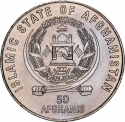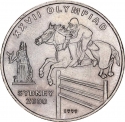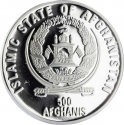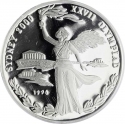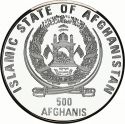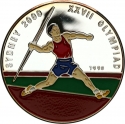You are about to finish your registration. Please check your mailbox (including spam folder). There should be a letter with a confirmation link. Check setting to make sure that your e-mail address is correct.
Send letter againDescription
The 2000 Summer Olympics, also known as Sydney 2000 or the Millennium Olympic Games, took place from September 15 to October 1, 2000, in Sydney, Australia. It was the second time Australia hosted the Summer Olympics and the first in the Southern Hemisphere since Melbourne in 1956.
Sydney won the bid to host the 2000 Games in 1993. Teams from 199 countries participated, competing in over 300 events. The United States led the medal tally, followed by Russia and China, with Australia in fourth place. Several countries, including Cameroon and Colombia, won their first gold medals, while others like Barbados and Saudi Arabia won their first-ever Olympic medals.
Sydney's organization, volunteers, and sportsmanship received universal praise from the international media. The Times called it "one of the most successful events on the world stage," and the Electronic Telegraph hailed it as a benchmark for future Olympics. The success of the Sydney Games influenced London's bid for the 2012 Olympics, with Lord Coe citing them as a benchmark for the spirit of the Games.
Engraver: Erika Puskás
Obverse

|
Depicts a pictogram-like representation of a hammer thrower and a detail of a protective net. In the upper left field, the inscription "26th Summer Olympics" is arranged in three rows in a circular manner, while in the lower left field, the inscription "SYDNEY" is visible, and in the lower right field, the year of the Olympic Games is shown. XXVII. |
|---|---|
Reverse

|
At the top, the coat of arms of the Republic of Hungary is depicted. In the center, the denomination is shown. Surrounding the upper part in a circular manner, the country name (Hungarian Republic) is arranged in two rows. At the bottom right corner, the inscription is displayed in three rows, containing the mint mark (BP), the year of issue, and the engraver's initials. MAGYAR KÖZTÁRSASÁG |
| Edge |


